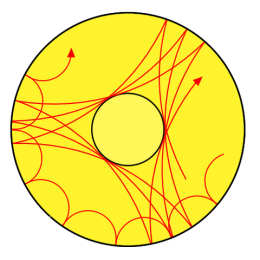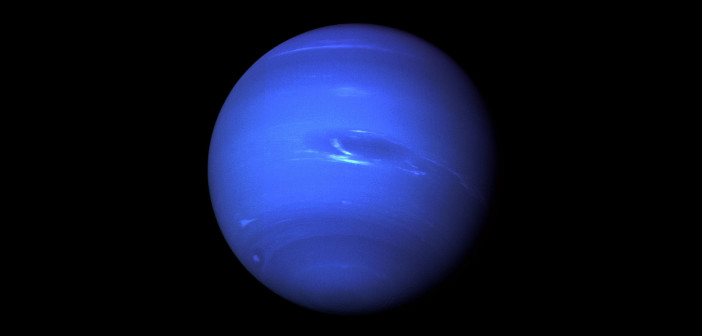How would the Kepler mission see a star like the Sun? We now know the answer to this question due to a creative approach: a new study has used the Kepler K2 mission to detect signals from the Sun reflected off of the surface of Neptune.

Asteroseismology uses different oscillation modes of a star to probe its internal structure and properties. [Tosaka]
Information in Oscillations
Kepler’s most glamorous work is in discovering new planets around other stars. To successfully do this, however, the spacecraft is also quietly doing a lot of very useful work in the background, characterizing the many stars in our vicinity that planets might be found around.
One of the ways Kepler gets information about these stars is from oscillations of the stars’ intensities. In asteroseismology, we look at oscillatory modes that are caused by convection-driven pressure changes on the inside of the star. All stars with near-surface convection oscillate like this — including the Sun — and by measuring the oscillations in intensity of these stars, we can make inferences about the stars’ properties.
A Planetary Mirror
We do this by first understanding our Sun’s oscillations especially well (made easier by the fact that it’s nearby!). Then we use asteroseimic scaling relations — determined empirically — that relate characteristics like mass and radius of other stars to those of the Sun, based on the relation between the stars’ oscillation properties to the Sun’s.
The trouble is, those oscillation properties are difficult to measure, and different instruments often measure different values. For this reason, we’d like to measure the Sun’s oscillations with the same instrument we use to measure other stars’ oscillations: Kepler.

Top panel: Kepler K2 49-day light curve of Neptune. Bottom panel: power density spectrum as a function of frequency (grey). Neptune’s rotation frequencies and harmonics appear toward the left side (blue); the excess power due to the solar modes is visible toward the bottom right. The green curve shows the direct observations of solar oscillations simultaneously made by VIRGO/SPM. [Gaulme et al. 2016]
Measuring Solar Properties
The success of this technique for observing solar oscillations represents a remarkable technical performance. The oscillations the team observed by Kepler in the reflection from Neptune are consistent with the solar oscillations that were measured directly with programs like the Birmingham Solar Oscillations Network (BiSON) and SOHO/VIRGO/SPM.
What can we learn from the oscillations? The authors treated the detection of the Sun as though it were any other star being observed: they used the asteroseismic scaling relations to estimate the star’s mass and radius. Based on the oscillations they measured, they found a mass for the Sun between 1.11 ± 0.05 and 1.16 ± 0.09 solar masses, and a radius between 1.04 ± 0.02 and 1.05 ± 0.03 solar radii.
The fact that these values are a little high (roughly 13.8% too high for mass and 4.3% for the radius) illustrates the highly stochastic nature of stellar oscillations. Still, it provides a useful reference point, and it also gives us a valuable look at how Kepler would see a star like the Sun.
Citation
P. Gaulme et al 2016 ApJL 833 L13. doi:10.3847/2041-8213/833/1/L13

1 Comment
Pingback: observing the Sun with reflections from Neptune